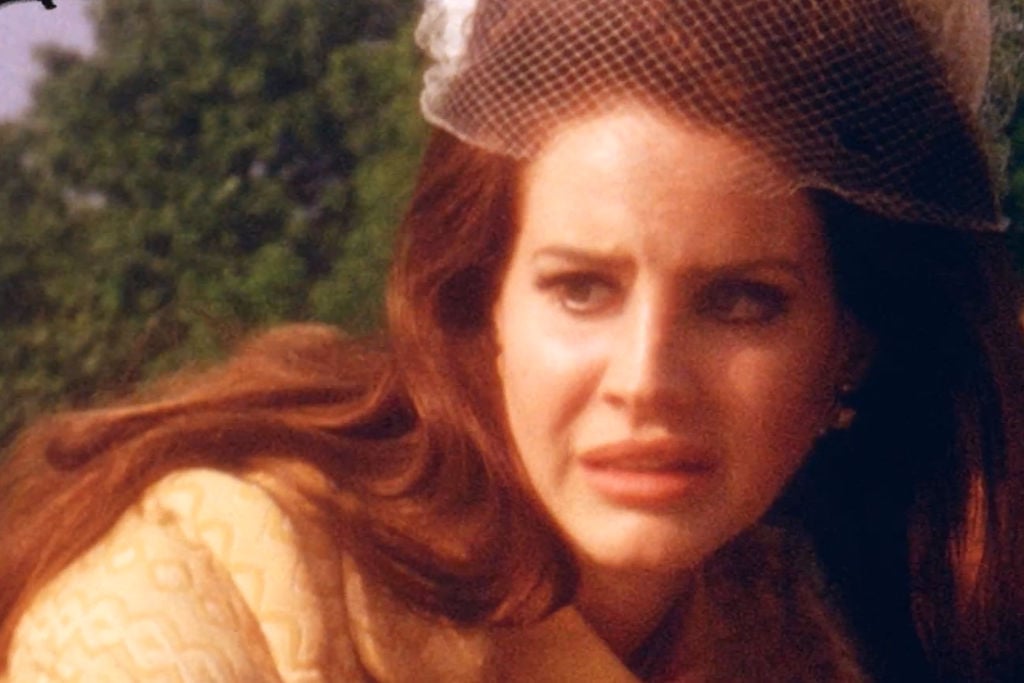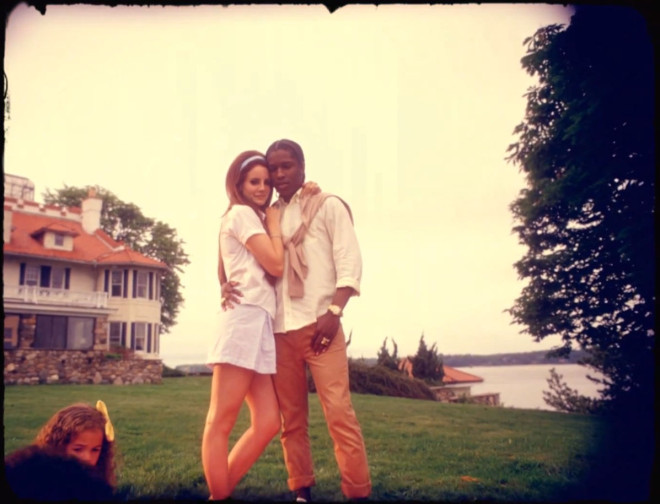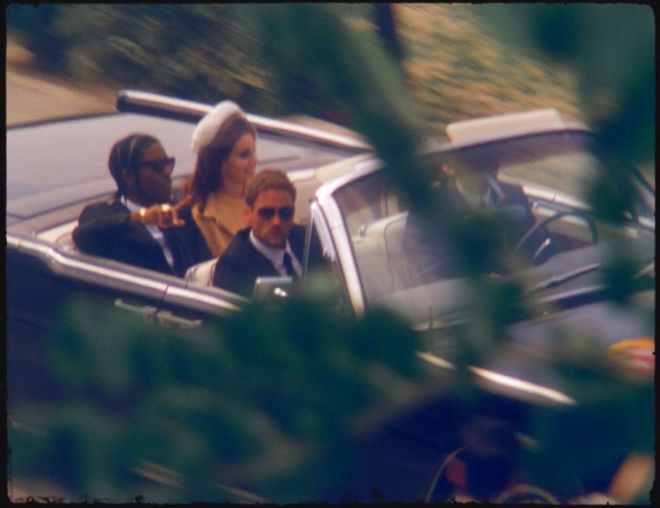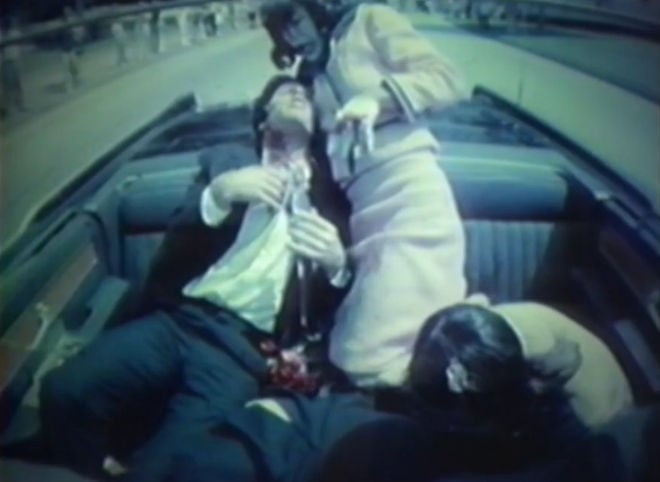Lana Del Rey, JFK, And The Dragging Out Of History
To celebrate the impending launch of their Music Issue, Melbourne literary journal 'The Lifted Brow' have offered up one of the issue's essays, from Junkee contributor Briohny Doyle.

It should come as no surprise that Melbourne-based literary journal, The Lifted Brow, are a close friend of ours. Editor and publisher Sam Cooney writes a semi-regular Twitter column for us, and was responsible for the best/only James Franco essay the world has ever seen.
The Lifted Brow’s latest issue, The Music Issue, features contributions from other writers we’ve published here — Chad Parkhill, Max Easton and Briohny Doyle — as well as writers we crush on from afar, like Benjamin Law, Clementine Bastow, Ianto Ware, Tom Doig, Matt Hickey, Angie Hart (from FRENTE!) and Darren Hanlon. The Lifted Brow are also trickling out around 30 mixtapes put together by some amazing writers — including Anna Krien, Catherine Lacey, Tao Lin, A.H. Cayley, Sam Twyford-Moore, Shaun Prescott and Lawrence Leung — and downloadable bundles put together by some of our countries finest independent labels: Special Award Records, Bedroom Suck Records, Fallopian Tunes, and Wood & Wire (of New Weird Australia).
AND there will be launch parties.
Sydney: Saturday April 27 @ Brighton Up Bar, Darlinghurst, featuring Matt Banham, Buzz Kull and Golden Blonde
Melbourne: Sunday May 5 @ Northcote Social Club, Northcote, featuring Mining Boom, Circular Keys and Milk Teddy
To celebrate all of this, they’ve allowed us to publish an essay from the issue. ‘Dragging Out History’ is the latest in Briohny Doyle’s ‘Popacopalypse’ column, and — through the lens of the Kennedy assassination – hones in on the appropriation of history in pop culture, and how media, endlessly reproducing the past, can mute the very fact it riffs off.
–
Popapocalypse: Dragging Out History
The video for Lana Del Rey’s 2012 song ‘National Anthem’ opens with the singer, shot in black and white faux super 8, costumed as Marilyn Monroe, singing happy birthday. She plays with her hair, mounts a smile. In the front row sits US President A$AP Rocky, dressed in an ill-fitting suit and baseball cap. He looks up, stone-cool from the shadows. The film cuts and suddenly we are in full colour, at the scene of president JFK’s 1964 assassination. The sound of crowd chaos from that historically key Dallas street rises up over a slow hip-hop beat. Another quick cut amid a flutter of many and now we have Del Rey as Jackie Kennedy, garbed in trademark style, flitting around the gardens of a Cape Cod mansion, tending the flower beds, mothering little black Kennedy children. She and A$AP pose in tableaux taken from Kennedy family home movies, reappropriating with a gangster’s licence. Del Rey butters toast while awkwardly smoking a cigarette. Rocky toasts democracy with his homies and a glass of yak. The couple relieve stress — perhaps about the Cuban missile crisis — by bumping ass to groin on the USS Sequoia.
Then we are back to the streets of Dallas. Riding in the midnight blue Lincoln limo with its suicide doors. A$AP places a presidential hand on a first-lady thigh. The camera makes a fuss of Jackie Del Rey’s manicure. It’s another beautiful day for the rich and powerful. But we all know what happens next. We have seen it before. Anticipating her loss through song, Del Rey waxes nostalgic over minor strings. The gunshot reintroduces the percussion. Jackie Del Rey’s eyes widen. She looks back to the secret service agent before attempting to crawl out across the boot of the Lincoln. It’s crass, tasteless, intriguing, and kitsch. I am obsessed with it. After every gunshot I replay the loop. Happy birthday, Mr President…
There are a few ways to read this clip. Foremost, as a marketing tool designed to beguile and provoke. Tastelessness and irreverence have long been the domain of the pop video, and artists vie for media attention with outlandish visual gimmicks. Think Lady Gaga as Mary Magdalena in biker sex triangle with Judas and Jesus, or Beyonce as post-apocalyptic Amazonian-despot-with-lion. The pop video is extra-textual augmentation for the song, presenting narrative complexities and dazzling imagery usually absent from lyrical content.
Del Rey is famous for her visual style. All her clips are presented as video collage, a hobby she claims to have been cultivating since a tender age. ‘National Anthem’ is not the first video in which she’s mixed fantasy and reality. In her break-out single ‘Video Games’ she included paparazzi video of drunk starlet Paz Del La Hueta; a smear of authenticity on the fucked-up glamour girl posture of her song.
Patriotism is another Del Rey aesthetic marker. She uses it in the Tommy Hilfiger sense: a collage of narrative clichés drawn together in the cut of a blazer, a swim suit, a particular yellow hue across the lens. An earlier single, ‘Born to Die’, begins and ends with Del Rey, naked, gripped in the tattooed yet paternal arms of a shirtless hunk as the stars and stripes billow behind them. In ‘Ride’ she holds a reverently faded flag out to the wind like a pair of gaudy wings. Broadly, Lana Del Rey’s shtick is ‘America’. She chases the nostalgic clichés of a technicolour promised land. Her America is a place that only exists in images and stories. She’s a Disneyland patriot, waving the flag of a country that no longer exists, and maybe never did, at least not how she sings it.

In ‘National Anthem’, Del Rey takes the logical next step, eroticising American history with pornographic panache. History here is not a matter of dates, events, the push and pull of dialectical materialism, or even some prophetic celestial patterning. Rather, all of history is collapsed into the vast aesthetic category of ‘vintage’. This is nowhere clearer than in Del Rey’s insistence that the act of casting a black rapper as President of the USA in the period immediately preceding the civil rights movement is an apolitical statement.
Rappers, particularly A$AP Rocky, are cool. Being rich in the ’60s is cool and America is cool. The romance, in Del Rey’s re-visioning of the Kennedy story, is not between John and Jackie, or John and Marilyn or Lana and A$AP, but between a generation of kids growing up on YouTube and the video clips that collapse time and offer up history as a mass of simultaneous contexts that slip on and off the timeline. By re-enacting these images, Del Rey performs a drag show of America.
Drag shows have a canny — and uncanny — way of revealing the constructed nature of the original object. The over-exaggerated, pantomime femininity of nightclub drag queens reveal gender as gestural theatre: a way of applying lipstick, of cocking the hips. Go-to gender theorist Judith Butler knew this. Pastiche does not require an element of knowing satire in order to be both entertaining and insightful, especially when its object is revealed as a phoney.
Like most pop stars, Del Rey is a master drag artist, whether she knows it or not. Her object is a nostalgic woman-ideal torn from old movies and magazines. Monroe. Nancy Sinatra. ’60s girl groups. And every now and then she grabs at some strange, offensively-white caricature of native/Latin/African American culture.

It’s easy to make the case that Del Rey is dragging a drag, performing a role that never existed off-stage. The Kennedy assassination then, is the perfect historical narrative to play dress-ups with. After all, it was Jackie Kennedy who first coined the analogy of her time with JFK in the Whitehouse as ‘Camelot’ (a fictional kingdom of egalitarianism, chivalry, magic swords and witches). The Kennedy presidency was the first to exist largely through the proliferation of media images beamed into the home via TV. No longer was a president some disembodied voice on the wireless, a picture in the paper or a distant figure in a parade. JFK was the first president to occupy our lounge rooms.
Both Don DeLillo and Jean Baudrillard point to the Kennedy assassination as a marker of a crisis of representation, a site at which coherence became impossible as images and accounts of the event proliferated. There is certainly the sense when you trawl the Kennedy YouTube archive (home movies, old news clips, to-camera addresses, speeches, glimpses of constructed intimacy, Jackie’s famous tour of the Whitehouse, the Zapruder assassination tape, etc) that you are handling the seed that germinated into our present day miasma of TV-Politics. With the Kennedy media-material we see the full power of the TV image, before the master manipulators learned all the tricks of how to wield it; before the cutting and pasting of moving images was something a bored teenager does as a hobby. To truck out a cliché that we’ll return to in a minute, there is an innocence in the way Kennedy inhabited his media image.
Del Rey is not the first to drag the Kennedy assassination. In 1975 the video art collectives Ant Farm and T.R Uthco bought a banged up Lincoln and travelled to Dallas to restage the assassination. In the video that documents this work, titled ‘The Eternal Frame‘, Artist-President Kennedy addresses the viewer posthumously to make a point about the way that the media incarnates people. “No president,” he claims, “can ever again be more than an image on your TV screen and no image can ever be in the past or the future, anything but dead.” When Ant Farm performed ‘The Eternal Frame’ they thought they were making guerrilla art, but within a few hours the police were helping them to execute their re-enactment. With state protection, they staged it again and again. A crowd gathered, becoming part of the work.

In the ‘Eternal Frame’ video, an older couple rubberneck the scene, binoculars pressed up to their eyes. The wife coos in earnest about the great resemblance of the male artist-performer to the real Jackie Kennedy. When Artist-JFK takes another bullet the wife jumps, wipes away a tear. “I’m just so glad we could make it here in time to see this. We were just in time,” she says, her husband nodding in solemn agreement.
In 1975 there is still the sense that the live performance, the embodied act, precedes the video-image – even if the act is drag, a re-enactment of a representation, which will soon return to video itself. Speaking about the work at a screening three decades after its creation, one of the artists comments that they were originally acting on an urge to “grab into the stream of data and loaded imagery” in order to sift out something they could reappropriate and nurture in the imagination. Something they could actually use. They wanted, in other words, to demonstrate people’s active participation in the making of mythologies. In this historical drag show, the fictionalisation was a way to get to the truth of the matter, to make something real out of images. It is in the aftermath that we can recognise the crisis of representation; here, as with any crisis, is where we find the looters.
The looting and lampooning of history has long been a postmodern obsession. It captivated JG Ballard: in The Atrocity Exhibition he professes, in an unreliable authorial voice, that the book is directly inspired by Kennedy’s death. He goes on to proclaim that “the mass media created the Kennedy we know, and his death represented a tectonic shift in the communications landscape, sending fissures deep into the popular psyche that have not yet closed.” He returns to the theme later in Crash, which follows a group of symphorophiliacs (car-crash fetishists) who restage famous accidents for and to erotic ends. Their leader, Dr Richard Vaugn, dreams endlessly of the deaths of the famous. He drives the same model Ford in which Kennedy was shot, a 1961 s100x Lincoln Continental limousine in midnight blue. In Vaugn’s drag show-cum-drag race the Kennedy assassination is reframed as a “special kind of car crash”. This is not just a writer’s ‘dark’ flourish. It’s an arguable stance. After JFK’s assassination, the Secret Service realised how inappropriate the vehicle had been. Visibility had been privileged over safety, reframing the assassination as an accident of design. Unable to correct the past, the car became a substitute. It was recalled by Ford for a refit. In Crash, by owning the original model of the vehicle, Vaugn owns a historical fact that was later obscured and corrected.
In this mechanistic enactment of history, events occur at the site of the breakdown. JFK’s assassination depends now as much upon a design flaw from the Ford company, or a naïve public relations preference for total visibility, as it does on political conspiracy and the popular conception of the Vietnam war. In the midst of conspiracy and cover-up, of mass media manipulations and lost frames from videotapes, there is the sense that the car, but also the bullet, the wig, the dinner jacket, the camera angle are each as close to the truth as any official historical text.
When Oliver Stone decided to make his film JFK he copped unprecedented flack, especially when compared to the reception his other docu-dramas Platoon and Born on the Fourth of July. While consensus had approved his right as a veteran to speculate on the experiences of war, he was seen as out of line with his treatment of the Kennedy assassination, despite professed motives of exploring the reasoning behind wartime policy. Critics worried about the impact the film would have on people’s understanding of the event. Again, there is an innocence to this concern, something heart-achingly last-century, perhaps appropriate for a film that seeks to restore claim to the existence of some kind of hidden truth to a historical event. I mean, of course The Movie impacts people’s understanding of history. On one level The Movie is history.
In JFK, vignettes of historical fiction are inserted into an ‘I recall’ type narrative of pieced-together testimony. The vignettes, lit up like theatre and designed like advertising stills, are noirish clichés – the hooker who saw too much, the gangster in over his head, the hedonistic queers, the inhuman federal agents. Here conspiracy is presented like a performance of its own: the act of drawing the narrative tropes out of history and linking them together into something coherently cinematic. Conspiracy, like drag, attempts to reveal the phoneyness of something, wants to deconstruct its object, but while drag reveals the impossibility of the real, conspiracy seeks to make its own truth claims.
To make the factoids and real evidence fit in with the visual style of the film, Stone messes with our expectations of video-truth. The real footage he uses of the assassination — taken from the famous Zapruder tape — is shown in colour, and the fictionalised evidence in grainy black and white. At the time, this blurring of fact and fiction was seen as a problematic way to address a historical narrative considered to be unresolved. Twenty years later this sounds like a very dated critique. In 2013, history is always unresolved and conspiracy is constructed as fast as the actual event; 9/11 is the ultimate example. But the historical reception of Stone’s JFK poses important questions: Who has the right to recreate history? When does re-enactment make a claim to truth and when is it drag? Is there a difference? If so, what differentiates a conspiracy theorist from a nut-job, an artist from an exploitationist?
Of course, Del Rey has no truck with coherence. For her, no archive is more revealing than any other. Vintage is the only vantage point. Authenticity is just one shade on a palette. The video-bites of history offer themselves up, sluttishly, to her heavily lined Instagram-eyes. Her take on Kennedy is the logical continuance of a cultural phenomenon in which visibility was privileged above all else. There is no conspiracy, no aching for authenticity, no desire for connection with the real. Video nostalgia means the watcher is (always and never) home.
Segueing effortlessly from Del Rey back into the YouTube archive, I watch another loop of the Zapruder tape. The midnight blue Lincoln moves swiftly into shot, flags hanging flaccidly from its fenders. There are a few sparse groups of observers standing by the road, but most people, like Adam Zapruder, the man who shot the film, are presumably further back. Jackie is wearing a pink pillbox hat. Her husband moves towards her across the backseat, maybe a hand on her thigh, but here there’s no zoom, no fussy manicure, no batting lashes, no revelation or diagrammatic overlay. When the film was initially released a conspiracy grew up over some missing frames, but looking back, it’s as though we need the space cleared by a missing frame to fit our own imaginings.
The grain on the film, the shadows on the manicured lawn, the sign for the turnpike: it’s all banal as anything. The gunshot is a flash of smoke. A crisis. A point in history after which everything is re-narrated. Even though it’s obvious what’s going on in this clip, it is still a moment on which we can hang a crisis of representation. Jean Luc Godard said famously that all you need for cinema is a girl and a gun, and here, in less than 30 seconds, we have it all.
When I watch the Zapruder tape, after hours of watching videos of pop songs, postmodern polemic, telemovies and blockbuster narrative, I’m struck by how quiet it is. What differentiates these images from all the copies and spin-offs and critiques is perhaps also the defining characteristic of any moment constructed as innocent: it fails to speak for itself. Compared with the cacophony of culture, history is really fucking silent. I guess for us, the YouTube archivists and archaeologists, history has become a drag.
–
Briohny Doyle writes about the apocalypse, and other stuff, in places like Going Down Swinging, Ampersand Magazine, The Lifted Brow and her blog Passion Pop Pistol. She is currently completing a PhD on the post-apocalyptic imagination. Her first novel The Island Will Sink is due out later this year through Hunter Publishers.